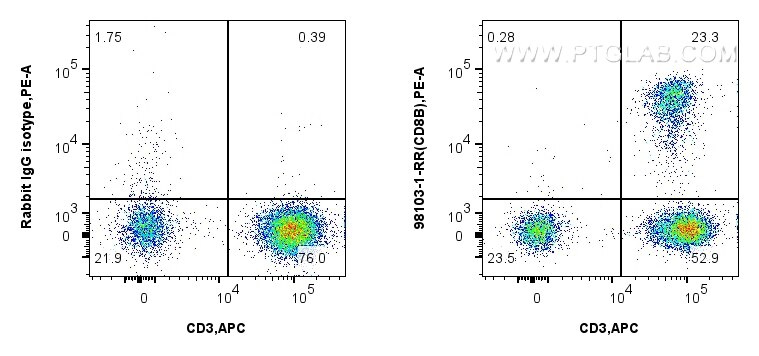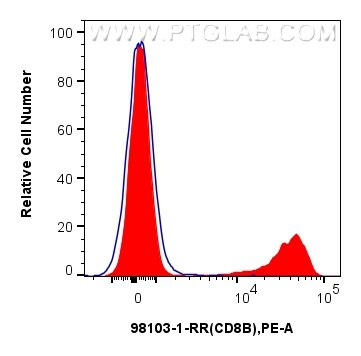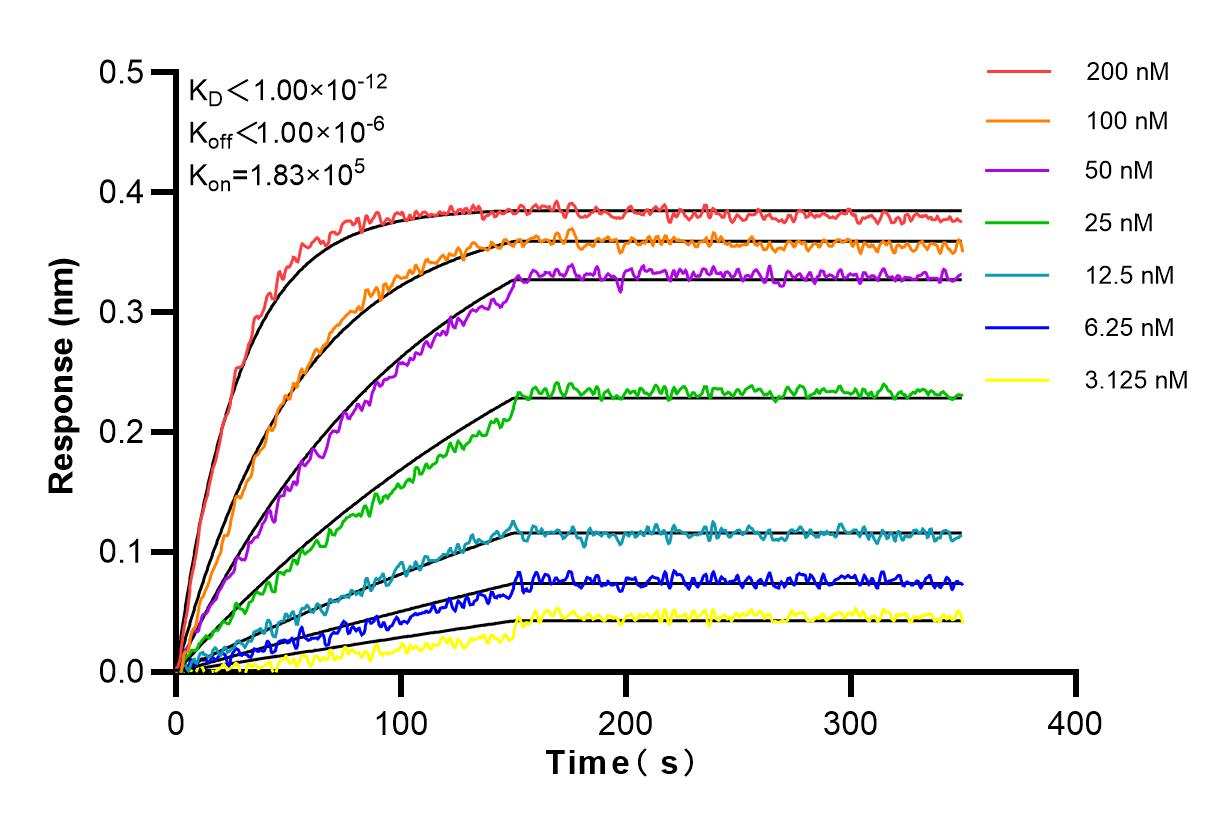Validation Data Gallery
Tested Applications
| Positive FC detected in | human PBMCs |
Recommended dilution
| Application | Dilution |
|---|---|
| Flow Cytometry (FC) | FC : 0.25 ug per 10^6 cells in 100 μl suspension |
| This reagent has been tested for flow cytometric analysis. It is recommended that this reagent should be titrated in each testing system to obtain optimal results. | |
| Sample-dependent, Check data in validation data gallery. | |
Product Information
98103-1-RR targets CD8b in FC applications and shows reactivity with human samples.
| Tested Reactivity | human |
| Host / Isotype | Rabbit / IgG |
| Class | Recombinant |
| Type | Antibody |
| Immunogen | Recombinant Protein 相同性解析による交差性が予測される生物種 |
| Full Name | CD8b molecule |
| Calculated molecular weight | 243 aa, 27 kDa |
| GenBank accession number | BC100913 |
| Gene Symbol | CD8B |
| Gene ID (NCBI) | 926 |
| RRID | AB_3672250 |
| Conjugate | Unconjugated |
| Form | Liquid |
| Purification Method | Protein A purfication |
| UNIPROT ID | P10966 |
| Storage Buffer | PBS with 0.09% sodium azide{{ptg:BufferTemp}}7.3 |
| Storage Conditions | Store at 2 - 8°C. Stable for one year after shipment. |
Background Information
CD8b (T-cell surface glycoprotein CD8 beta chain) is an integral membrane glycoprotein that forms disulfide-linked heterodimers with CD8a (CD8 alpha chain). The CD8 alpha/beta heterodimer is the predominant CD8 complex expressed on the cell surface (PMID: 1534146; 2111591). CD8 is a transmembrane glycoprotein predominantly expressed on the surface of cytotoxic T cells and can also be found on natural killer cells, cortical thymocytes, and dendritic cells. CD8 serves as a co-receptor for the T cell receptor (TCR). Both CD8 and TCR recognize antigens displayed by an antigen presenting cell (APC) in the context of class I MHC molecules. CD8 plays a role in T cell development and activation of mature T cells.
Protocols
| Product Specific Protocols | |
|---|---|
| FC protocol for CD8b antibody 98103-1-RR | Download protocol |
| Standard Protocols | |
|---|---|
| Click here to view our Standard Protocols |


